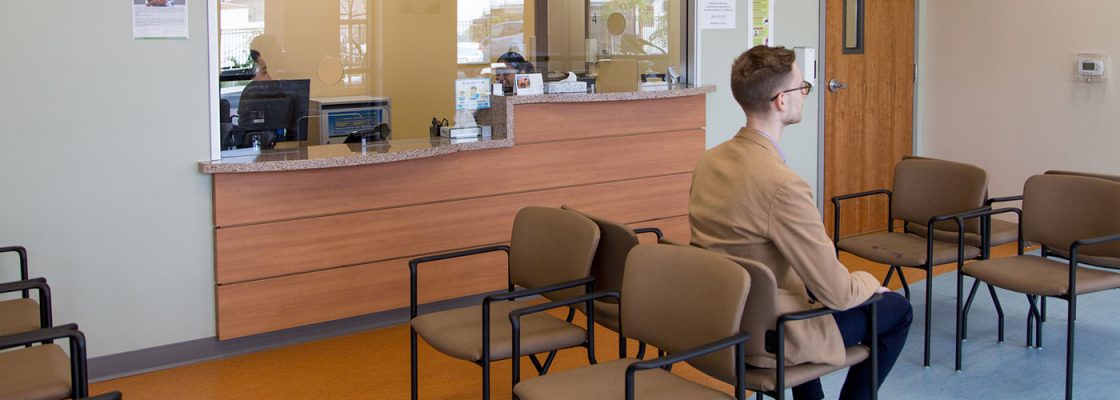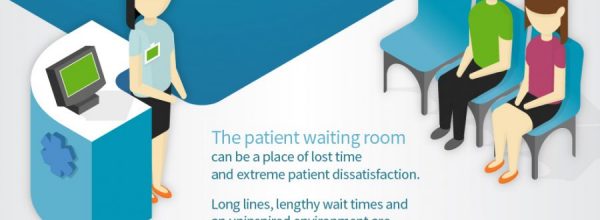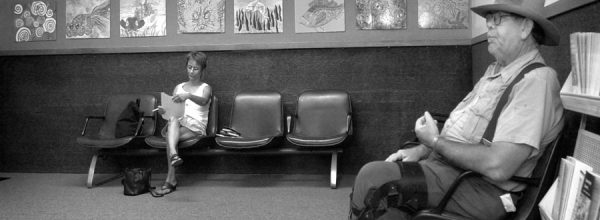Waiting rooms have long been major pain points in the patient experience, causing frustration and anxiety that saps efficiency and degrades health outcomes. Can the waiting room be reinvented? As part of CCI’s Cultivate Fund program, West County Health Centers successfully piloted a new staff role to assist and engage patients: the waiting room concierge.

Seeing The Problem
No one likes to wait around—least of all when one is sick or worried about one’s health. Thus the waiting room, particularly in healthcare, has become a symbol of banality and anxiety in the modern world. While arriving and checking in may seem simple to us, often patients, particularly ones who don’t spend a lot of time in a healthcare setting, aren’t sure what they are supposed to do when they arrive. Front desk staff may be busy or distracted with phone calls, making patients feel like they can’t ask questions or get help filling out arcane paperwork. And then the waiting itself: unproductive time that allows stress to build.
Fixing the Waiting Room
West County Health Centers recognized that the waiting room was a major pain point in their patient experience. Inspired by skills learned in CCI’s Catalyst program, WCHC performed direct observation of their waiting room and noticed that there were problems in the flow of patients and staff. They realized that there was a need for navigation in the waiting room.
WCHC did rapid testing of new workflow processes and will be making some physical changes to the waiting room. To begin they planned to add a new electronic kiosk for patients to check themselves in—and had the added advantage of getting patients to update their info when they checked in. They put an Apple TV system in the waiting room, playing educational video content. They also changed out their traditional paperwork-on-clipboards for EHR-enabled digital tablets. Then they put took a staff person out from behind the desk and put them in the waiting room with this tablet to check patients in. This was the beginning of developing the waiting room “concierge.”
Co-Designing the Concierge
As part of CCI’s Cultivate Fund program, WCHC embarked on a pilot journey to involve patients and frontline staff to co-design the new concierge role. These sessions were very popular with clinic staff, and allowed WCHC leaders and innovators to hear feedback directly from the front office staff and medical assistants who were trying out the new role.
Among questions that they tackled with the co-design sessions were where best to place the kiosk, what kinds of conversations should take place, and what sort of tools should be at the concierge’s disposal. From these discussions along with the EHR and check-in software, the concierge’s tablet was also equipped with an instant messaging platform that allowed the concierge to check-in with care teams for providers who were running behind and rearrange schedules accordingly.
How It Works
- Unlike front desk staff, the waiting room concierge places themselves in the waiting room with patients, greeting new patients when they arrive and answering questions.
- When a patient needs to check in, the concierge, depending on how busy they are, will either direct the patients to check in at the kiosk, have the patient check in with the front desk staff, or will check the patient in themselves on the tablet.
- When patients check in who are not yet plugged into the clinic’s patient portal, the concierge can encourage them to sign up and walk them through the process at the kiosk or on the tablet.
- During periods of waiting that are normally wasted downtime, the concierge can assist with agenda-setting by asking patients what they are hoping to discuss during their visit. This helps organize the patient’s thoughts and makes it easier for providers to prioritize. Doing the agenda setting in the waiting room also allows the medical assistant to focus on taking vitals, discussing preventative maintainance or addressing other care items. This turns passive waiting into active care.
- The concierge can also let patients know about other wellness services offered by the health center. Taking this time in the waiting room to educate patients on the resources available to them is more effective than just putting out brocures.
- The concierge should also offer patients water, direct them to the restroom, and handle any number of other miscelleneous questions and announcements.
Lessons from Practice
- WCHC is determined to find a word to replace “concierge” as they move forward on this role. “Concierge” did not made sense to a significant number of patients in this safety net setting. “Host” or “navigator” might make better replacements.
- The concierge is able to manage a waiting room of up to 10 patients comfortably.
What’s Next?
WCHC has found the concierge program to be a great success, with patients and particularly other staff finding it to be very helpful. The co-design sessions were also very popular. WCHC plan to expand the concierge program, moving towards giving the concierge full control over the waiting room and putting front desk staff in a position to act as more of a call center for scheduling appointments.
Learn More
- West County Health Centers provides comprehensive, quality and accessible health care services to the communities of Western Sonoma County. Learn more on their website: www.wchealth.org
- WCHC has participated in a number of CCI programs, including the Innovation Catalyst and Cultivate Fund programs.






